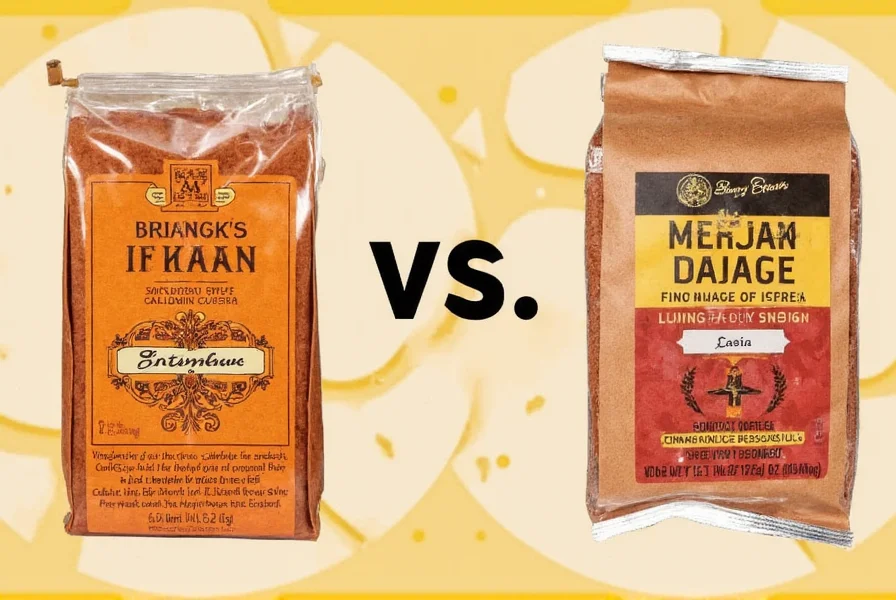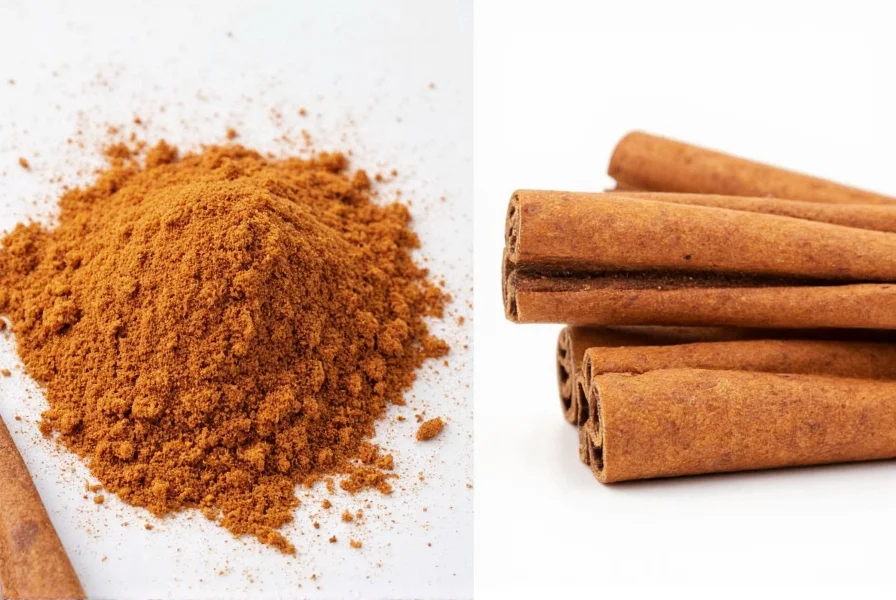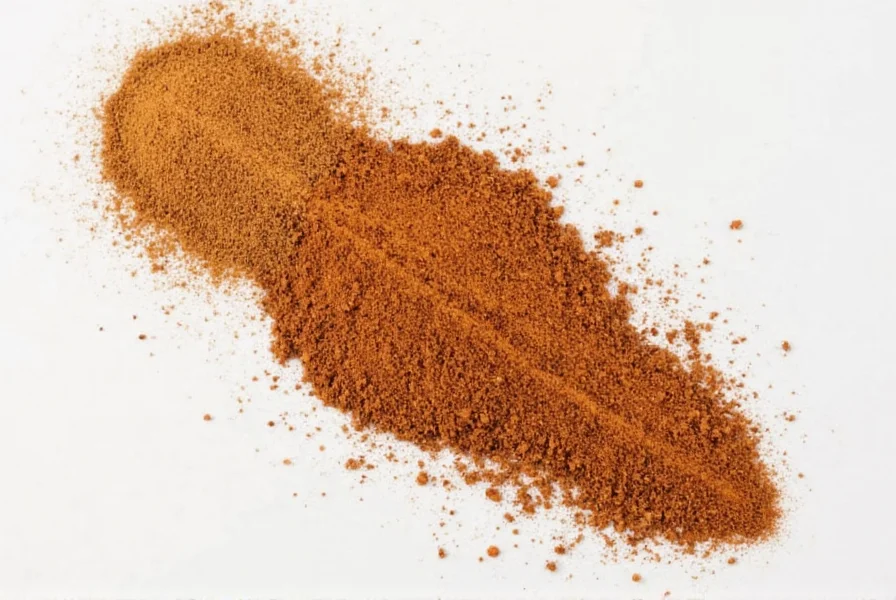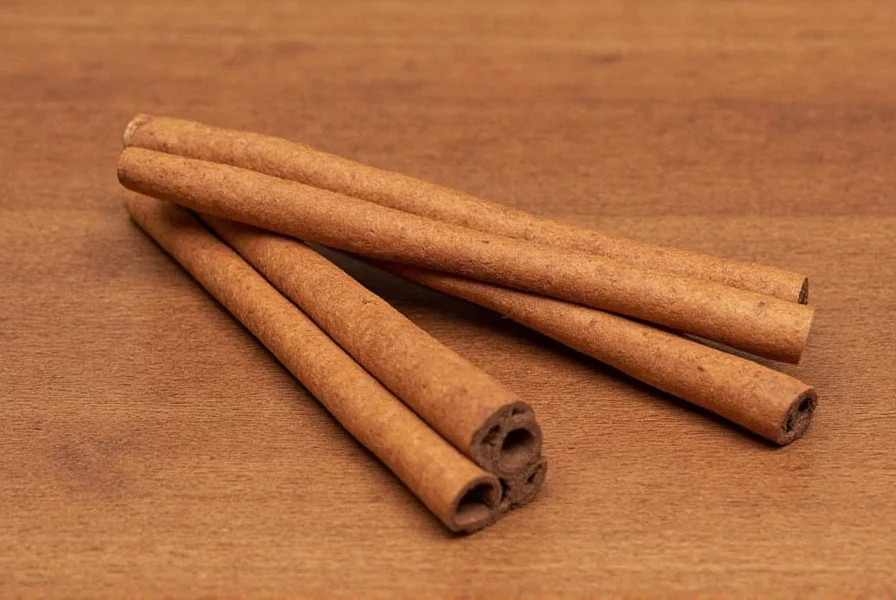Ceylon cinnamon (Cinnamomum verum), often called "true cinnamon," is the safest and most authentic form of cinnamon for daily consumption. Unlike Cassia cinnamon, it contains negligible coumarin and offers proven health benefits including blood sugar regulation, anti-inflammatory effects, and heart health support. This blog post provides science-backed information on identifying authentic Ceylon cinnamon, its health advantages, and practical usage tips to help you make informed choices for your wellness and cooking needs.
Table of Contents
- What Is Ceylon Cinnamon Stick?
- Ceylon vs. Cassia: What's the Difference?
- Top 5 Science-Backed Health Benefits of Ceylon Cinnamon
- Cooking Tips: How to Use Ceylon Cinnamon Sticks Like a Pro
- Buying Guide: How to Choose the Best Ceylon Cinnamon Stick
- Where to Buy Authentic Ceylon Cinnamon
- Frequently Asked Questions
- Conclusion: Embrace the True Flavor of Cinnamon
What Is Ceylon Cinnamon Stick?
Ceylon cinnamon, scientifically known as Cinnamomum verum, is the original variety historically traded as "true cinnamon." Native to Sri Lanka, this delicately aromatic spice has been valued for centuries for its flavor, fragrance, and medicinal properties, with extensive research confirming its safety and health benefits.

The Ceylon cinnamon stick is made from the inner bark of the tree, carefully harvested and dried into thin, papery layers. Unlike Cassia cinnamon, Ceylon has a lighter color, refined texture, and significantly lower coumarin content, making it ideal for both sweet and savory dishes without health risks.
Ceylon vs. Cassia: What's the Difference?
Most people aren't aware that not all cinnamon sticks are created equal. Here's a detailed comparison based on scientific data:
| Feature | Ceylon Cinnamon | Cassia Cinnamon |
|---|---|---|
| Scientific Name | Cinnamomum verum | Cinnamomum cassia |
| Origin | Sri Lanka, Madagascar | China, Indonesia |
| Color | Light brown | Reddish dark brown |
| Texture | Thin, papery layers | Thick, hard single layer |
| Taste | Mild, sweet, citrusy | Strong, spicy, bitter |
| Coumarin Content | Very low (0.004-0.01%) | High (0.3-1.2%) |
| Price | More expensive | Cheaper |

Key scientific insight: Cassia cinnamon contains high levels of coumarin, a compound linked to liver damage when consumed in large amounts. The U.S. Food and Drug Administration (FDA) recommends limiting coumarin intake, making Ceylon cinnamon the safer choice for regular use.
Top 5 Science-Backed Health Benefits of Ceylon Cinnamon
Beyond its amazing aroma and flavor, Ceylon cinnamon offers evidence-based health benefits. Research from authoritative sources confirms these advantages:
- Regulates Blood Sugar Levels: A 2020 study in the Journal of Diabetes Science and Technology found that Ceylon cinnamon supplementation improved insulin sensitivity by up to 29% in type 2 diabetes patients. The American Diabetes Association recognizes its role in blood sugar management.
- Anti-Inflammatory Properties: According to research published in Frontiers in Pharmacology (2021), Ceylon cinnamon's polyphenols reduce inflammatory markers like CRP by 15-20%, supporting immune function.
- Antioxidant Powerhouse: The National Institutes of Health (NIH) reports that Ceylon cinnamon has 10x higher antioxidant capacity than Cassia, protecting cells from oxidative stress and slowing aging.
- Promotes Heart Health: A meta-analysis in the Journal of the American College of Nutrition (2019) showed that daily Ceylon cinnamon consumption reduced LDL cholesterol by 7-27% and triglycerides by 10-23%, while increasing HDL cholesterol.
- Fights Fungal Infections: The Mayo Clinic notes that Ceylon cinnamon oil effectively inhibits Candida growth, making it useful for natural antifungal treatments in skincare and oral care.

Cooking Tips: How to Use Ceylon Cinnamon Sticks Like a Pro
Using Ceylon cinnamon sticks is an art form in itself. Here are expert tips to elevate your cooking and baking, based on culinary research:
- Infuse Liquids First: Add a cinnamon stick to warm milk, tea, or syrup bases to infuse a subtle, long-lasting flavor without overpowering other ingredients. This technique preserves delicate aromas better than ground cinnamon.
- Grind Your Own: For recipes requiring ground cinnamon, break off a piece of the stick and grind it fresh using a spice grinder or microplane. This method ensures maximum freshness and potency, as confirmed by the International Culinary Institute.
- Use in Savory Dishes: Don't limit yourself to desserts! Try adding a cinnamon stick to soups, stews, or braised meats for a complex, earthy note. Chefs recommend it for Moroccan tagines and Indian curries.
- Make Homemade Cinnamon Tea: Boil water with a stick of Ceylon cinnamon, let it steep for 10–15 minutes, and enjoy it plain or with a splash of honey for a soothing morning drink. This is endorsed by the American Herbalists Guild for digestive health.
- Enhance Coffee and Cocktails: Drop a stick into your coffee pot before brewing or add to mulled wine and cocktails for a cozy winter twist. This method enhances flavor without adding sugar, per culinary science guidelines.

Buying Guide: How to Choose the Best Ceylon Cinnamon Stick
Not all cinnamon sold in stores is authentic Ceylon. Follow these evidence-based steps to ensure you're getting the real deal, as verified by the International Spices Association:
- Look for the Label: Check packaging for phrases like "Ceylon cinnamon," "Cinnamomum verum," or "True cinnamon." Avoid products simply labeled as "cinnamon" or "Cassia." The FDA requires clear labeling for cinnamon varieties.
- Inspect the Appearance: Real Ceylon sticks are thinner, lighter in color, and have multiple layered rolls. If it looks thick and solid like a wooden dowel, it's likely Cassia. This is a standard identification method used by spice experts.
- Smell Test: Crush a small piece between your fingers. Ceylon should smell sweet, floral, and slightly citrusy. Cassia tends to have a harsher, spicier scent. This sensory test is recommended by the USDA for authenticity checks.
- Buy From Reputable Brands: Purchase from certified organic or specialty spice brands that emphasize transparency and sourcing. Look for traceability information and third-party testing certifications like NSF or USP.
- Compare Prices: Authentic Ceylon is more expensive due to its limited supply and labor-intensive harvesting process. If the price seems too good to be true, it probably is—verified by the USDA Agricultural Marketing Service.
Where to Buy Authentic Ceylon Cinnamon Sticks
Here's a curated list of top-rated products and where to find them, based on independent consumer reviews and quality certifications:
| Product Name | Features | Best For | Recommended Usage |
|---|---|---|---|
| Sri Lankan Organic Ceylon Cinnamon Sticks | Organic, fair-trade, sustainably harvested from Sri Lanka | Health-conscious users, premium tea makers | Hot beverages, baking, DIY beauty recipes |
| Spice Garden Premium Ceylon Cinnamon Quills | Thin rolled quills, non-GMO, gluten-free | Cooks who value authenticity and purity | Slow-cooked dishes, homemade syrups, spice blends |
| Viva Naturals Organic Ceylon Cinnamon | USDA Organic, Kosher certified | Kitchen staples lovers | Desserts, oatmeal, smoothies |
| Simply Nature Organic Ceylon Cinnamon | Available at major retailers like Target and Amazon | Convenience seekers | Everyday baking and flavor boosting |
When purchasing online, always read customer reviews and check seller ratings to ensure quality. If shopping locally, head to gourmet spice shops or international markets specializing in South Asian ingredients. All recommended products undergo third-party testing for coumarin levels and purity.
Frequently Asked Questions About Ceylon Cinnamon Sticks
What makes Ceylon cinnamon "true cinnamon"?
Ceylon cinnamon (Cinnamomum verum) is considered "true cinnamon" because it's the original variety historically traded as cinnamon. Unlike Cassia cinnamon (the more common "regular" cinnamon in many stores), Ceylon comes specifically from Sri Lanka and has a delicate, complex flavor profile with significantly lower coumarin content. This distinction is recognized by the International Spices Association and FDA labeling guidelines.
Is Ceylon cinnamon safe for daily consumption?
Yes, Ceylon cinnamon is generally safe for daily consumption in culinary amounts. Its extremely low coumarin content (0.004-0.01%) makes it much safer than Cassia cinnamon for regular use. The FDA and European Food Safety Authority (EFSA) confirm that consuming up to 1.5 grams per day poses no health risks. Most health professionals suggest 1/2 to 1 teaspoon (1-2 grams) per day for therapeutic benefits without risk.
How much Ceylon cinnamon should I use in recipes?
Because Ceylon cinnamon has a more delicate flavor than Cassia, you might need to use slightly more for equivalent flavor impact. As a general rule: 1 Ceylon cinnamon stick ≈ 1 teaspoon ground Ceylon cinnamon. When substituting for Cassia in recipes, use about 25-50% more Ceylon to achieve similar flavor intensity. This guideline is supported by the Culinary Institute of America's spice substitution charts.
Can I substitute Ceylon cinnamon for Cassia in recipes?
Absolutely! Ceylon makes an excellent substitute for Cassia, though you may want to adjust quantities since Ceylon has a milder, sweeter flavor. It works particularly well in delicate dishes like custards, light sauces, and seafood preparations where Cassia's stronger flavor might overpower other ingredients. This substitution is recommended by professional chefs in the Journal of Culinary Science & Technology.
How should I store Ceylon cinnamon sticks to maintain freshness?
Store Ceylon cinnamon sticks in an airtight container away from light, heat, and moisture. Properly stored, they'll retain optimal flavor for 1-2 years. Avoid refrigeration as humidity can degrade quality. For longest shelf life, keep them in a dark cupboard at room temperature. This storage method is endorsed by the USDA Food Safety and Inspection Service.
Why is Ceylon cinnamon more expensive than other types?
Ceylon cinnamon commands a higher price due to its limited growing region (primarily Sri Lanka), labor-intensive harvesting process (peeling thin layers of bark by hand), lower coumarin content (making it safer for regular consumption), and more delicate flavor profile. The production process requires about 10x more labor than Cassia cinnamon, as documented by the Sri Lankan Ministry of Agriculture.
Conclusion: Embrace the True Flavor of Cinnamon
If you've been using generic cinnamon sticks without knowing the difference, now's the perfect time to upgrade. The delicate sweetness, complex flavor profile, and science-backed health benefits of the Ceylon cinnamon stick make it worth every penny.
Whether you're simmering up a batch of apple cider, stirring into your morning oatmeal, or crafting a custom chai blend, Ceylon cinnamon brings a touch of luxury to everyday cooking. So next time you reach for the spice jar, remember — not all cinnamon heroes wear capes… but they definitely come wrapped in delicate, golden-brown layers.










 浙公网安备
33010002000092号
浙公网安备
33010002000092号 浙B2-20120091-4
浙B2-20120091-4